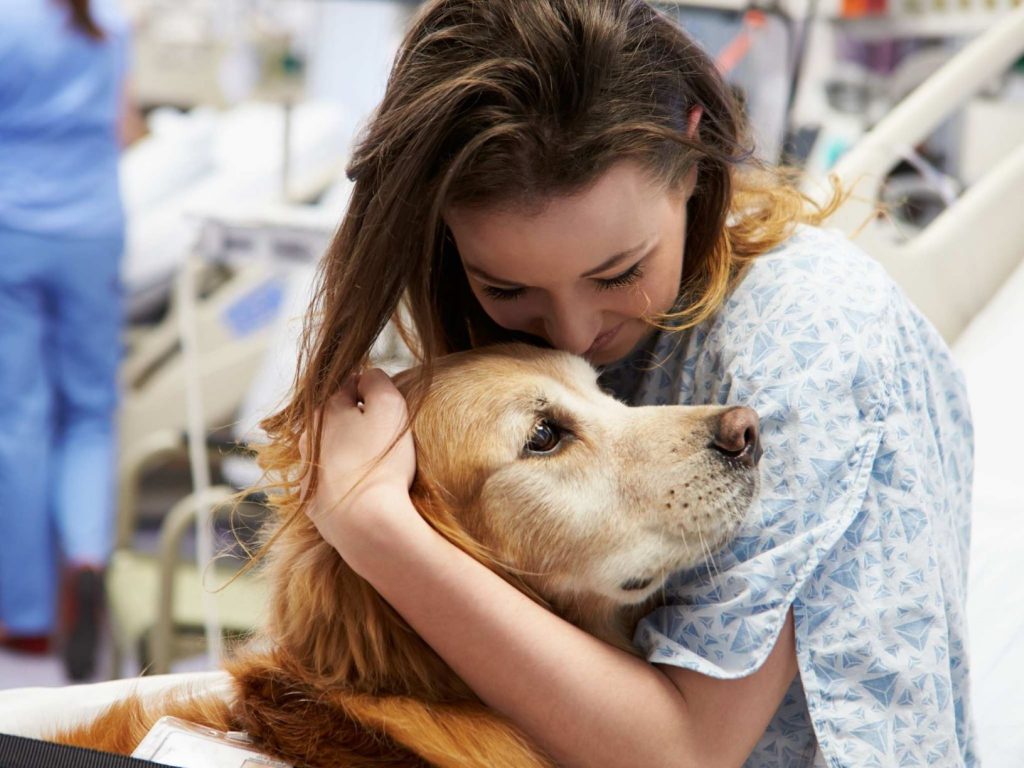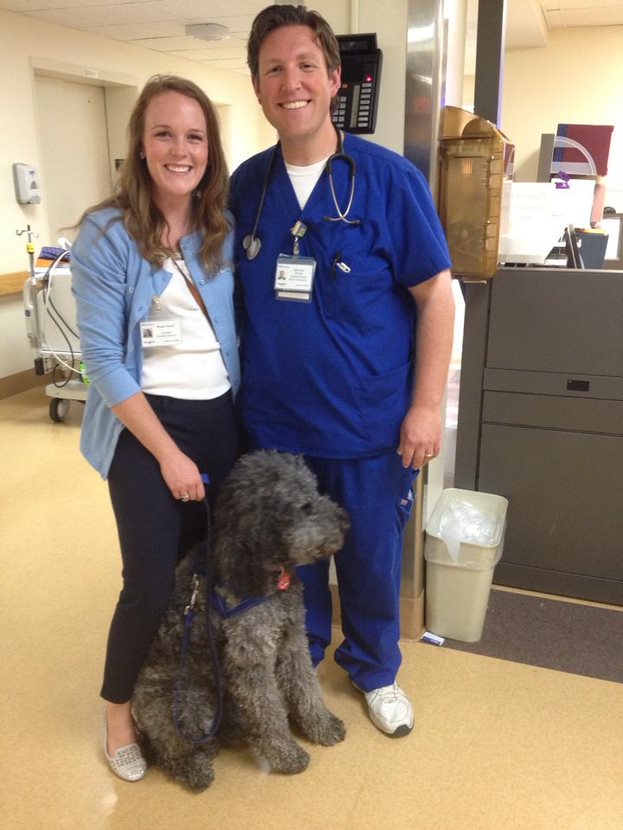Are Therapy Dogs the Same as Service Dogs? Can My Therapy Dog Come to Work with Me?
According to the American Kennel Club (AKC), no; service dogs do not have the same legal permissions or certifications as therapy dogs used for animal assisted therapy.
If you are interested in certifying your animal, make sure to check your facility’s requirements! 
Some may require your furry friend to receive training from a specific therapy program, while others may be more lenient.
Once you have met the outlined requirements, you will be able to incorporate your animal into your workday!
My Experience
I am sure you all are wondering why I am so passionate about this topic. Well…
I have a therapy dog! His name is Ryder, and he is a labradoodle who thinks he is human! I put him through a fully accredited program with Therapy Dogs Inc., and he did so well! It was an all-around great bonding experience for us.
When I used to work in the hospital, I would take him with me to visit patients and staff members.
Sometimes, we would go visit family members in the OR waiting room to help calm their nerves. Other times, we would visit the med-surg floors to brighten patients’ days, and on occasion, I would take him into the ICU to visit staff members and the non-ventilated patients.
Ryder was always the best boy when he was working! From my perspective, it was so apparent that the ICU staff members loved him, too.
Ryder was able to give them a brief escape from their stressful reality.
As you may now know, I am a huge advocate for the use and incorporation of animal assisted therapy into hospitals and outpatient facilities for both patients and staff.
There are tons of publications out there that support the use of therapy dogs to reduce stress and anxiety; if you have some free time, I encourage you to look into it!
Be an advocate in your own facility! Plus, it’s always fun to love on some animals!









